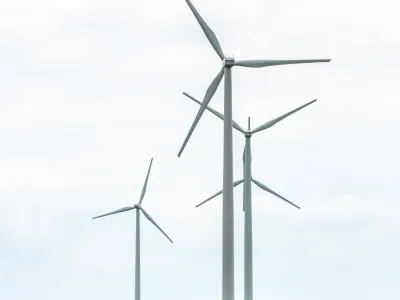Renewable energy programs

Published April 1, 2021
There are more and more tangible ways for consumers to reduce the environmental impact of their household energy usage. On top of maximizing energy efficiency, households also have many options when it comes to using renewable energy resources. Not all households may be able to install rooftop solar panels or subscribe to community solar gardens. For those that are interested in other ways to incorporate the use of renewable energy in their homes, many electric utilities offer programs that allow both renters and homeowners to draw their energy from renewable energy sources. This blog post will serve as a guide for consumers interested in using renewable energy at home and provide resources on available renewable energy programs with various electric providers across Minnesota.
Utility renewable programs typically allow a customer to offset some or all of their current energy use. Participating in these programs lets consumers to transition to more sustainable energy sourcing by adding renewable energy to the grid above and beyond what the utility is already attaining. Different programs have different commitment periods and levels, including monthly, 1-year, 5-year, and 10-year contracts. Commitment requirements, terms of early termination, and additional costs may vary depending on the program, so be sure to check with your utility provider to confirm program specifications.
Some renewable energy programs, such as Xcel Renewable*Connect, provide a blend of different renewable resources, while others focus on either wind or solar energy (e.g. Xcel Windsource, Otter Tail TailWinds, Minnesota Power Renewable Source). Sometimes the energy drawn for these programs is entirely locally sourced, such as Xcel Windsource’s drawing from wind farms located throughout Minnesota. Here is a more complete list of renewable energy programs:
Select your utility Agralite Renewable Energy Credit Program Anoka Clean Energy Choice Arlington Clean Energy Choice Arrowhead Wellspring Wind Energy Program Barnesville Bright Energy Choices Beltrami Electric Infinity Renewable Energy BENCO Wellspring Wind & Solar Breckenridge 100% Renewable Brown County Wellspring Wind & Solar Brownton Clean Energy Choice Buffalo Clean Energy Choice Chaska Clean Energy Connexus Renewable Energy Program Cooperative Light & Power Wellspring Dakota Electric Wellspring Renewable Energy Detroit Lakes Bright Energy Choices East Central Energy Renewable Energy East Grand Forks Clean Energy Choice Fosston Infinity Wind Energy Freeborn-Mower Evergreen Program Goodhue County Wellspring H-D Renewable Energy Credit Program Heartland Evergreen Kandiyohi Wellspring Wind Energy Lake Country Wellspring Renewable Wind Energy LeSueur Clean Energy Choice Lyon-Lincoln Renewable Energy Credit Program Meeker Wellspring MiEnergy Evergreen Minnesota Power Renewable Source Minnesota Valley Prairie Winds Renewable Pricing Program Minnkota Infinity Renewable Energy North Itasca Wellspring Renewable Energy Program North St. Paul Clean Energy Choice Program Olivia Clean Energy Choice Otter Tail TailWinds People's Energy Evergreen Renewable Energy Program Renville-Sibley Renewable Energy Credit Program Rochester Carbon Offset Program Roseau Infinity Renewable Energy Program Runestone Wellspring Program Shakopee Clean Energy Choice Sioux Valley Renewable Energy Credit Program South Central 100% Renewable Program Stearns Wellspring Renewable Energy Steele-Waseca Wellspring Thief River Falls Infinity Wind Todd-Wadena Wellspring Wind & Solar Traverse Renewable Energy Program Wild Rice Infinity Renewable Energy Program Wright-Hennepin Renewable Choice Xcel Renewable*Connect Xcel Windsource
It’s impossible to track the exact electrons generated from these wind and solar generators, so utilities instead use an accounting mechanism called renewable energy certificates (RECs). RECs are created to measure renewable energy as it is generated, and utilities “retire” RECs equivalent to their customers’ subscriptions in renewable energy programs. By effect, RECs allow utilities and consumers to verify that they are offsetting carbon emissions by using renewable energy beyond government requirements. This also means that participating households will have consistent and reliable energy through these renewable programs regardless of whether the specific wind turbine or solar panel their program relies on is generating power at any given moment.
If you are interested in using renewable electricity in your home, it is worthwhile to learn more about the renewable programs offered by your utility in order to make the best choice for your household. And, as always, consuming less energy and using energy efficiently are easy and effective ways to save money and lessen your household’s impact on the environment. For more energy efficiency tips, check out CUB’s resource library.